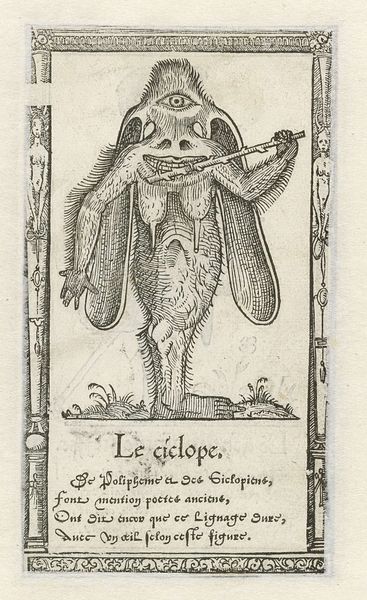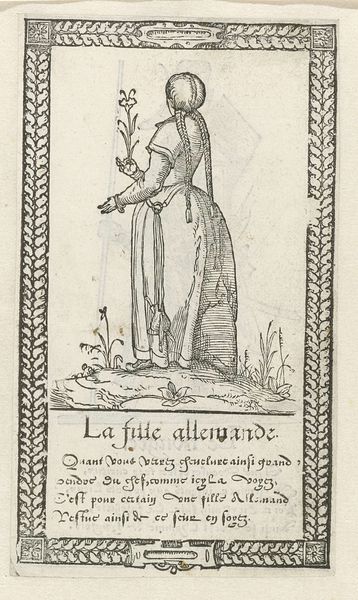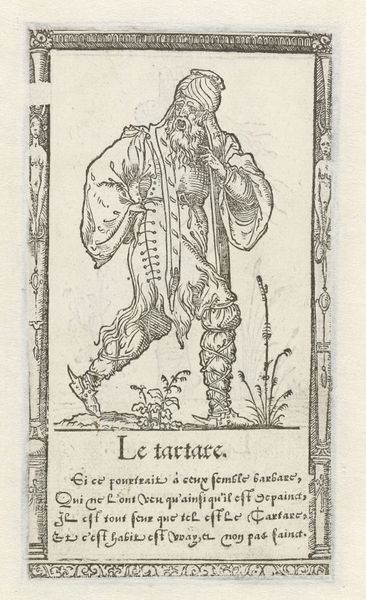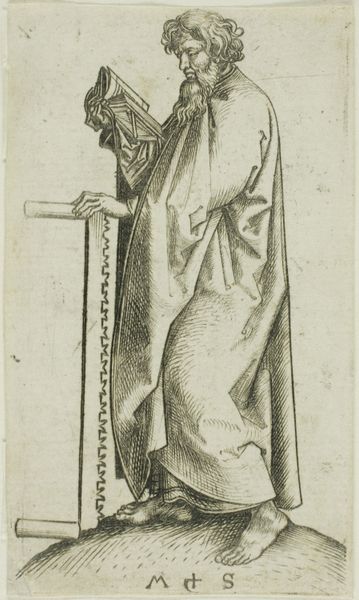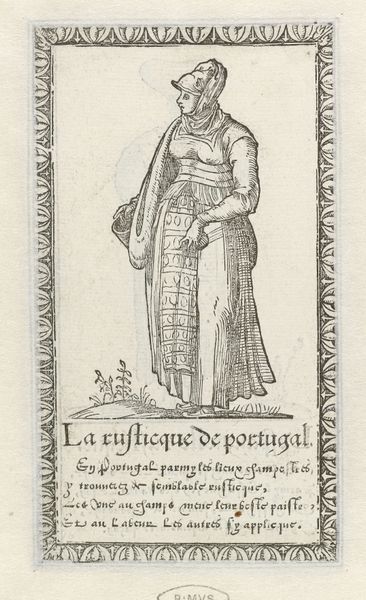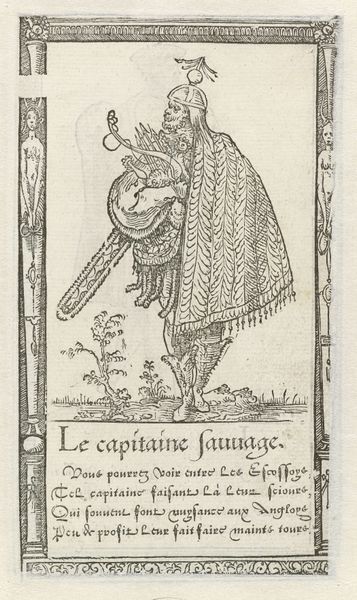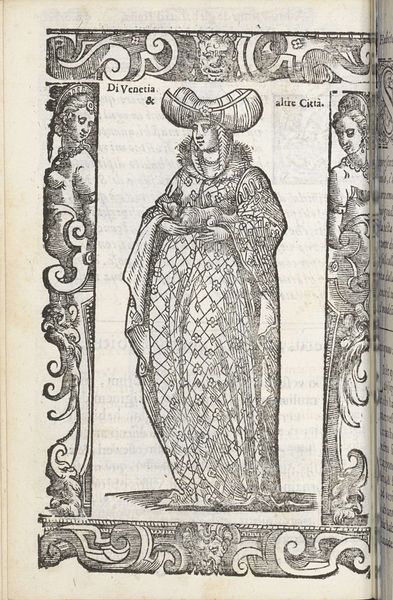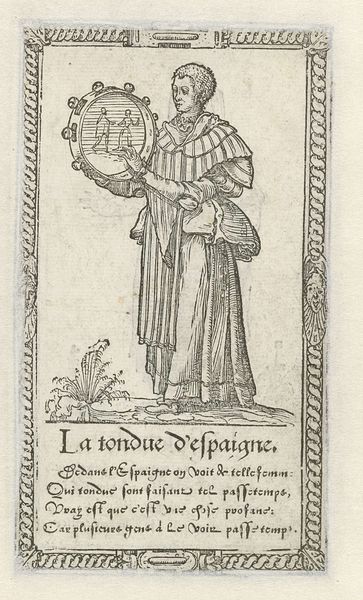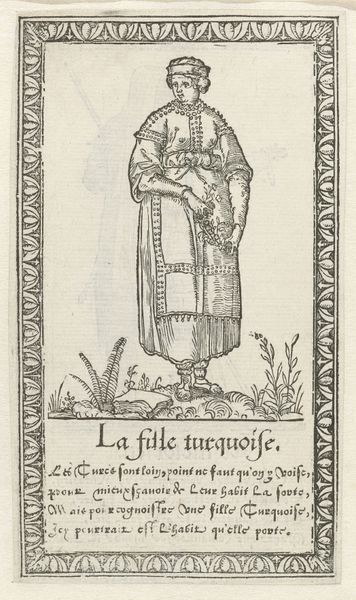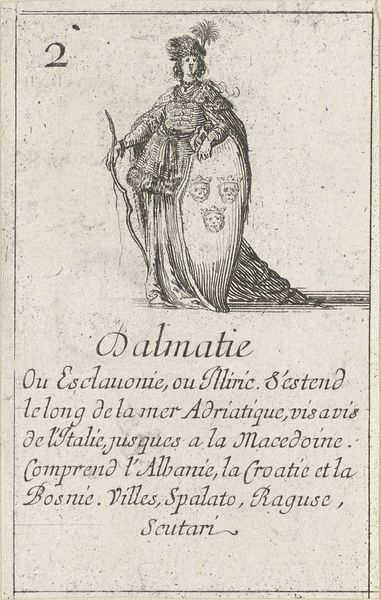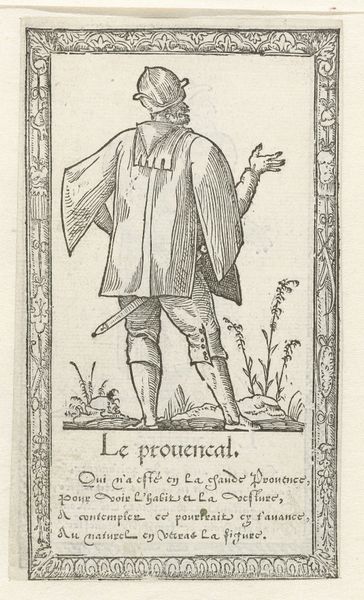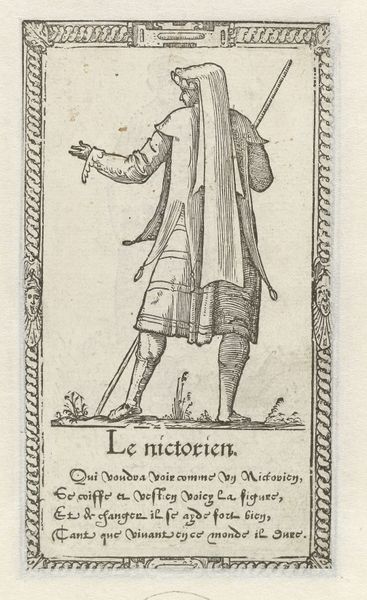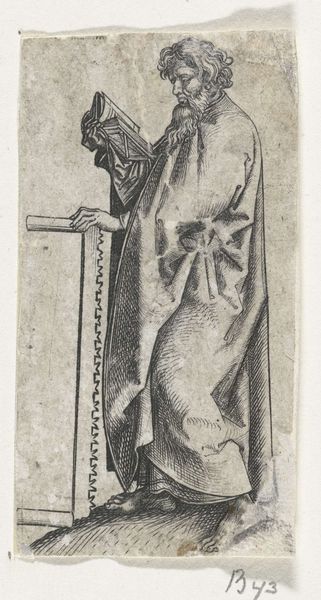
drawing, paper, ink, engraving
#
drawing
#
allegory
#
pen drawing
#
pen sketch
#
old engraving style
#
figuration
#
paper
#
ink
#
line
#
history-painting
#
northern-renaissance
#
engraving
Dimensions: height 146 mm, width 85 mm
Copyright: Rijks Museum: Open Domain
Editor: So this intriguing engraving from 1562, "Zeebisschop" by François Desprez, rendered in ink on paper, features a rather strange creature. It feels like a dark fable or maybe a commentary on...something? What do you see in this piece? Curator: It's truly an arresting image. Desprez's "Sea Bishop" immediately evokes questions of cultural anxieties of the 16th century. Allegories were rife, used to discuss social issues. Considering the “bishop” form, it subtly mocks the religious elite, cloaked, perhaps, in ignorance or otherworldly intentions. The visual language is potent, linking aquatic strangeness with established power structures. Do you find the posture suggestive in any way? Editor: Now that you mention it, there’s something almost…proud about how it stands. Despite its bizarre anatomy. The poem underneath calls out his muteness and resemblance to Bishops and their vestments. Is it common to see political or social critique embedded in monstrous figures? Curator: Absolutely. Monsters and hybrid beings were often stand-ins for societal ills, moral failings or fears of the unknown. Think of Bosch's nightmarish figures! The choice to depict it as a "sea bishop" connects to fears of corruption and worldly power corrupting spiritual leadership. Also, there’s a link to cultural memory – sea monsters had been symbols of chaos and ungodliness for ages, going back to the Leviathan of the Bible. Desprez has effectively weaponized these symbols to critique religious authority. Editor: That's fascinating. I hadn't considered how deep those roots go. Seeing it as commentary, using both visual and textual languages together...changes everything. Curator: Indeed. It reveals how symbols, even bizarre ones, become powerful tools for transmitting complex cultural critiques.
Comments
No comments
Be the first to comment and join the conversation on the ultimate creative platform.

